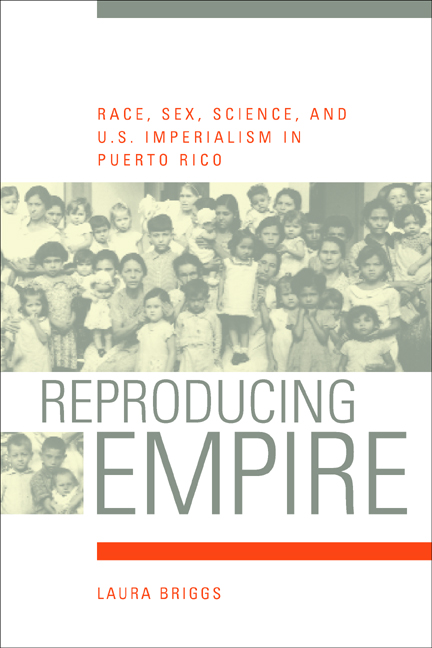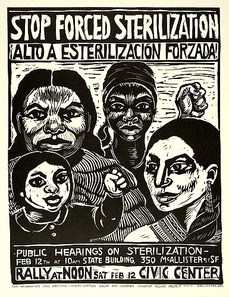Beginning with the U.S. entering Puerto Rico and more recently the involuntary sterilization of Chicana’s in California, a discussion of latinx reproductive rights has come to the foreground. In Puerto Rico people take opposing viewpoint on the issue. Some believe that the mass sterilization was a concerted effort by the U.S. military, federal government and corporate capitalists to forcibly sterilize Puerto Rican Women. Other like Laura Briggs believes that in most cases the sterilization in Puerto Rico was not forced and the Puerto Rican women did have agency over the decision to become sterilized.
Various studies have showed that by 1970 thirty percent of Puerto Rican women had been sterilized. Thirty percent, that is an enormous amount of the population of Puerto Rico that in just over forty years was sterilized. This statistic was one of the first things presented in the film, La Operacion. This documentary came out in 1982 that sought to uncover the mass sterilization that occurred in Puerto Rico, and provide the stories of Puerto Rican women who had been sterilized unjustly. The film presented the story of numerous Puerto Rican women through various manners had gotten sterilized without their proper consent. They were being pressured by government, which in 1936 had passed a law making sterilization legal and free to Puerto Rican Women. The sterilization laws were passed right when U.S. corporation were increasing jobs available for women under operation bootstrap. The film really brought up the idea of agency. Did the Puerto Rican women who were sterilized have any agency in their own reproductive rights, or was it the government, husbands, and U.S. corporations pressuring and forcing the women to get sterilized. Was the sterilization of all these women forced, or did different picture of the same portrait get painted?
Laura Briggs takes an in depth look at the sterilization of Puerto Rican Women through numerous lenses . She asks the question: Did systemic sterilization occur in Puerto Rico, and is it evidence of genocide? The image of sterilization might have gotten distorted due the voice of Puerto Rican women getting shouted over by others. Mainland Feminists in the U.S. thought that the situation Puerto Rican women faced would be a great way to push their own agenda and help Puerto Rican women at the same time.
“By championing the politics of illegitimate sterilization, mainland feminism reiterated the colonialist move rather than providing an alternative. U.S. feminists erased the history of Puerto Rican feminist support for birth control and sterilization and insisted on the authority of U.S. feminists and Puerto Rican nationalists claims of wanting to “save” working class Puerto Rican women. They used concerns about sterilization abuse on the island as a vehicle to express political views on a host of other subjects.” -Briggs 159
They lobbied for women’s reproductive freedoms both to have babies but also not have babies. But they painted a picture that the high sterilization rates on the island were due to social control by the U.S. military, government, and corporate capitalism. This distorted the Puerto Rican women’s birth control movement into a U.S. feminists movement. Then again, Puerto Rican nationalists and the Catholic Church drowned out the Puerto Rican women’s voice yet again. They were against sterilization with their driving argument being that it was a secret genocidal mass sterilization policy being carried out. They filled newspapers with articles of the forced sterilization and states effort to reduce the population on the front page of newspapers. Then, Luis Marin was popularly elected in 1948 and headed up operation bootstrap which intended to industrialize Puerto Rico. U.S. corporation were hiring Puerto Rican women into the workforce. Luis Marin supposedly was worried about “overpopulation”. This was mostly the false sense of “overpopulation” due to the flood of Puerto Ricans into cities and more rural areas. There wasn’t the infrastructure to support tons of people coming into these areas which heightened the sense that sterilization was necessary to reduce the population.

The mass sterilization in Puerto Rico was not necessarily genocidal or systemic. Laura Briggs even provides evidence that the whole story was painted incorrectly. Puerto Rico didn’t have the infrastructure that would be required for the government to carry out a campaign to limit women’s reproduction against their will. Through the 1930’s there were only a handful of rural private hospitals or clinics that birth control was possible through, and while a brief period in 1940-1941 ran a significant birth control program it was short lived. Furthermore, most Puerto Rican women gave birth at home with a midwife until 1940. Often women were not even in a hospital or clinic when improper pressure could have been placed on the women. Then, survey data found that women were overwhelmingly pleased with having been sterilized. The data could have been flawed but it seems like if there was an campaign of forced sterilization there would be no trace of these reports.

Sociological and demographic studies have sought to find Puerto Rican working class women who will provide evidence of the forced sterilization campaign but besides a few cases none have been found. The women used in the film La Operacion could have been coerced into sterilization in numerous other unjust ways.
Even in present day social media there are still reminders of what happened in Puerto Rico. People won’t forget what happened. Whether it was systematic or it wasn’t this has produced healthy discussion that can lead into further discussions of the involuntary sterilizations of Mexican women on the U.S. mainland in California.




